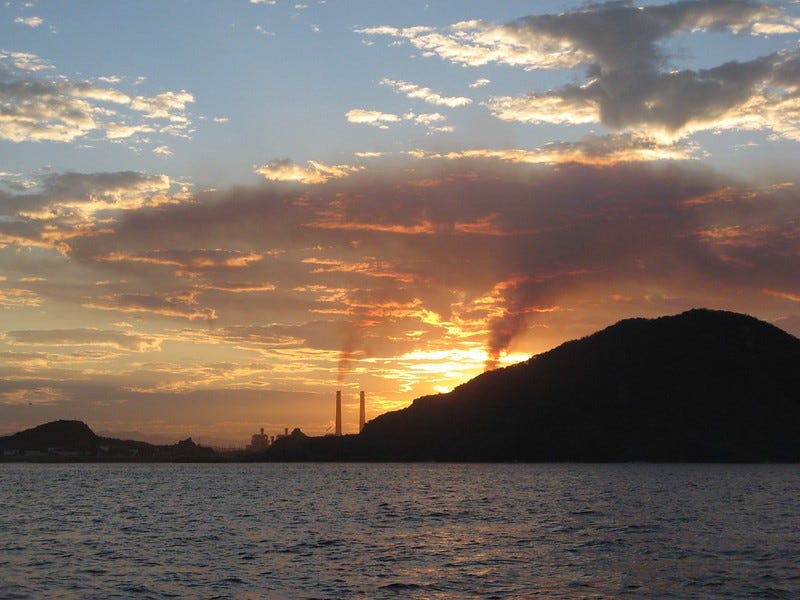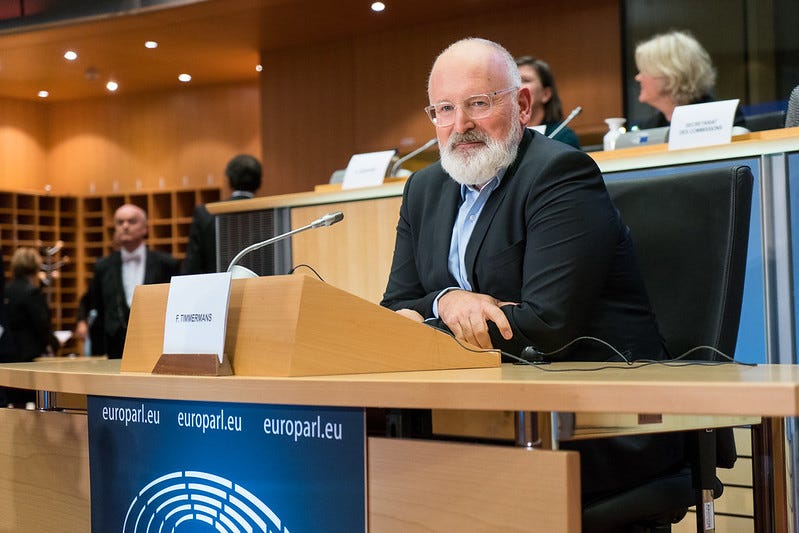First climate disaster of the Biden era; the social cost of carbon, and W. Virginia's coal plan
Welcome to Callaway Climate Insights. Only a week until our exclusive webinar with EU Climate Chief Frans Timmermans. Spread the word.


Yet more deadly winter weather is forecast for hard-hit Texas, Oklahoma and the southeast Tuesday night, bringing record low temperatures and significant snow accumulation, the National Weather Service said.
Global warming threats are typically no match for a record cold spell, and often the scapegoat, as we’re seeing today in Texas and the mid-U.S. But make no mistake, this is a climate disaster, and the failure of the Texas grid — dwarfing that of California this past summer — dramatically underscores the fact that we are not ready.
Texas, legendary home to the oil industry, is actually the U.S. leader in renewable energy. On a good day, wind and solar can power almost two-thirds of its supply. But reports of frozen turbines and rolling blackouts triggered the first real backlash against the Biden climate agenda, which will last long after the heat comes back on.
Right now, people are in real danger, and it’s imperative to get all supplies to the grid — including frozen natural gas pipelines and downed thermal power plants — operating again. Authorities say this polar vortex, pushed lower by warming in the Arctic, is unprecedented in states like Texas and Oklahoma.
It will go down as the first climate disaster of the Biden era. Instead of blaming alternate sources of power, we need to double down on shoring up the grids, and finding more power. Everywhere. The squeeze in power markets the past few days, with prices soaring 20-fold in some cases, tells the story.
This is the true test of the energy transition.
More insights below. . . .
Don’t forget to contact me directly if you have suggestions or ideas at dcallaway@callawayclimateinsights.com.
Today’s insights: Measuring the next disaster by the social cost of carbon, and why a higher price is needed.

. . . . President Joe Biden has tasked a group to develop an estimate for the cost we will pay in future climate emergencies from greenhouse gas emissions today, and an announcement is imminent. Obama’s team had it around $50 a ton. Trump’s gang slashed it to $8. Two prominent economists yesterday issued a massive report arguing why it should be closer to $100. Here’s why they are right. . . .
. . . . Mexico, once a pioneer in fighting climate change, is turning back to fossil fuels, according to The Guardian. President Andrés Manuel López Obrador, responding to local political pressures and voting patterns, is re-opening coal plants, including two on the Texas border. A massive blackout after Christmas contributed to the pressure to turn its back on renewables and resume burning, as have blackouts the past few days as the Texas cold snap moved south. A reminder of the power of short-term politics. Read more here. . . .
. . . . Two oil giants — BP and Chevron — are investing $40 million in a Canadian company that intends to use oil-drilling equipment to drill for geothermal heat near the Earth’s core to generate electricity. The novel use for what someday could be stranded equipment assets is a model for transitioning the fossil fuel majors to more creative ways to lead in energy exploration. Read more here. . . .
. . . . Sad to see GreenTech Media being shuttered by parent Wood Mackenzie. With ESG investments soaring and the U.S. energy transition picking up steam under President Biden, now seems a terrible time to be closing one of the early leaders in the space. I read their stuff often, and this story a few weeks ago about China’s dubious wind power installation statistics by Jason Deign was first rate. A salute to the news team there, working today to cover the Texas disaster even as their final deadline looms. . . .
In coal-dependent West Virginia, a transition plan takes shape
. . . . West Virginia’s top three utilities are almost entirely coal-dependent, and one in four U.S. coal jobs are in the state, but a tentative plan to transition to renewable energy by 2035 is starting to take shape, writes George Barker. Without a sign-off, the state risks losing renewable energy jobs to neighbors Maryland and Virginia, both of whom have aggressively hung their shingles. But old habits die hard.
West Virginia’s largest utility providers, Appalachian Power, Wheeling Power and Monongahela Power & Power Edison rely on coal for 72%, 100% and 99% of their power generation, with their recent integrated resource plans continuing along the status quo of small incremental progress which is “nowhere near the sort of build out that would really realize the opportunity that’s in front of West Virginia right now,” said Cronin. . . .
Join Callaway Climate Insights and European climate chief Frans Timmermans on Feb. 23 for an exclusive event
Our exclusive conference with European Union Climate Commissioner Frans Timmermans is coming up on Callaway Climate Insights on Tuesday, Feb. 23, and we need your help spreading the word.
Timmermans is widely acknowledged as the most influential figure in sustainability and climate change in the world. He will join several distinguished speakers, including Eamon Ryan, Ireland’s environment minister, to discuss Europe’s energy transition goals for 2030 and how it’s working with the incoming Biden Administration.
We are glad to join EY and European industry group Ibec in bringing you this special event.
Callaway Climate Insights readers who register will be able to access the link to the webinar starting at 1 p.m. GMT (8 a.m. Eastern) on Feb. 23. We will send an email out ahead of time with the link, and details on how to register will also appear on our website.
We ask that you please share this email far and wide with your ESG and sustainability colleagues or anyone you think who might enjoy hearing about how European and U.S. climate policies are coming together, and what the major challenges are. In addition to Timmermans and Ryan, the event will feature Danny McCoy, CEO of Ibec; Rachel Bronson, president and CEO of The Bulletin of Atomic Scientists; Sarah Fay, managing director of Glasswing Ventures USA; and Marsha Vande Berg, CEO of MJV Global Insights and former CEO of the Pacific Pension and Investment Institute.
Harvesting soybeans and wind
. . . . Rising temperatures and frequent droughts attributed to climate change have increased the risks that U.S. rural corn and soybean farmers face, slashing their income and crop yield, George Barker writes. Is renewable solar and wind energy a profitable new crop they can sow? Read more about the potential benefits of wind and solar projects. . . .
News briefs: Jaguar and Land Rover to become all-electric


Editor’s picks:
Jaguar and Land Rover revving up to become all-electric
EU watchdogs set to pounce on carbon market speculation
Amazon’s renewable energy shopping leads the pack
Data driven: Deep in the cold heart of Texas

. . . . A rare southern and middle America winter storm has knocked out power for more than 4 million Texas residents and placed more than 150 million people in the U.S. under weather advisories. It has set record-low temperatures in 10 states, including a -38°F. reading Monday in Hibbing/Chisholm, Minn., shattering a 1939 record of -32°F. Increased power demand and storm-related outages overwhelmed power grids and forced blackouts, while the energy markets rallied. Brent crude futures reached a price not seen since January 2020, jumping 1.4% to $63.30 a barrel Monday, while natural gas futures at Henry Hub in Louisiana went up 4.3%. West Texas Intermediate futures also rose 1.1% to $60.13 a barrel.






